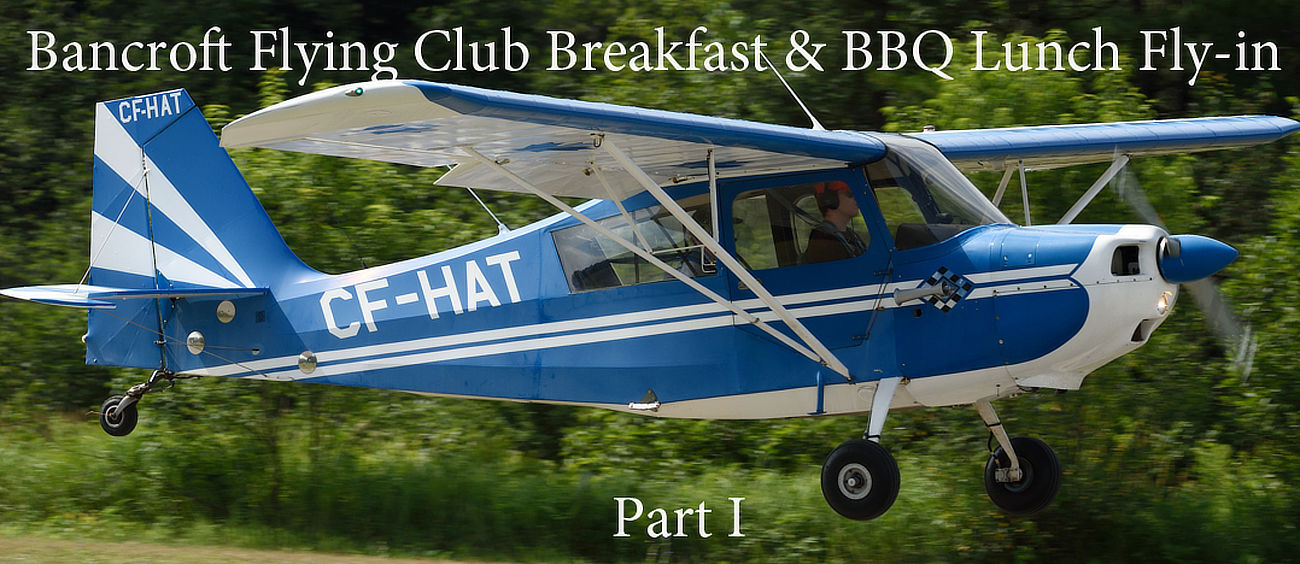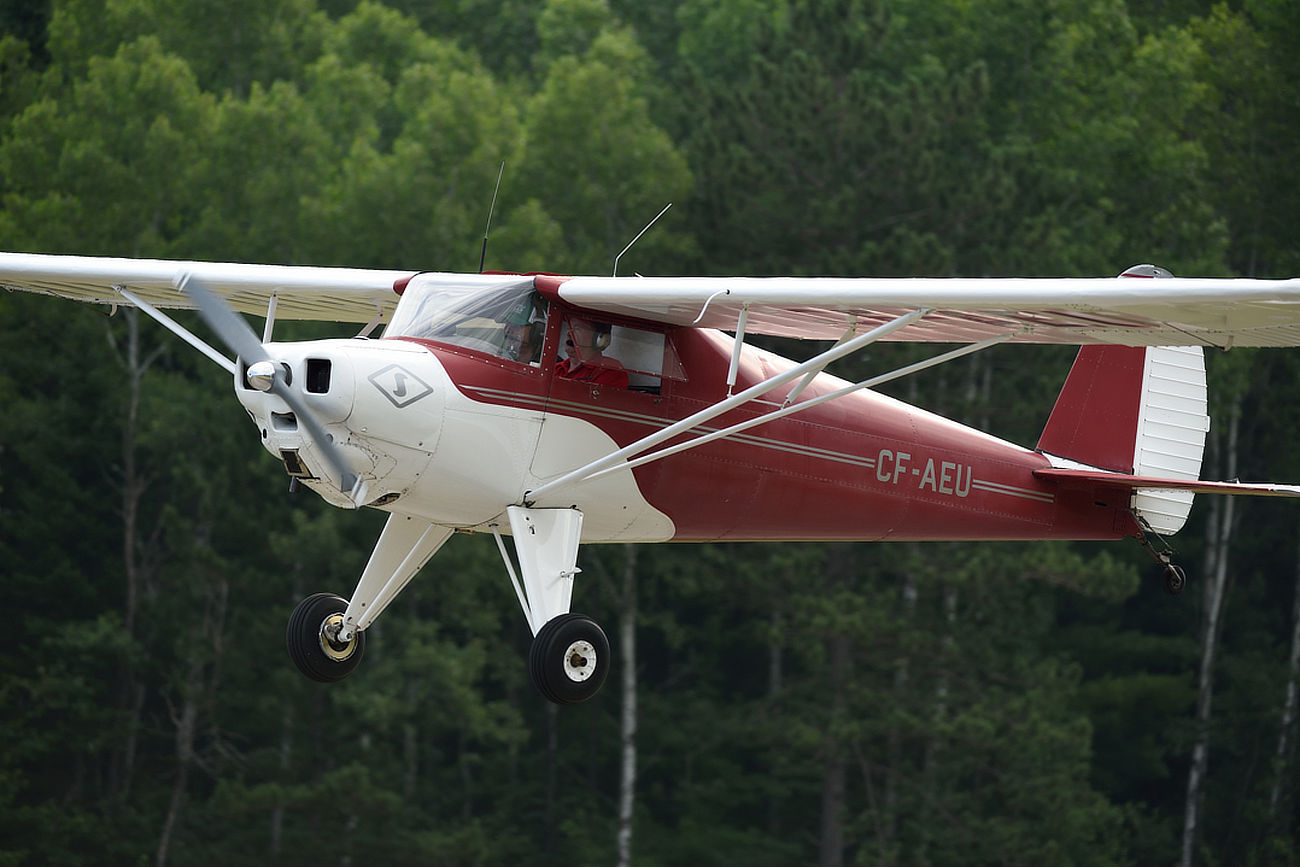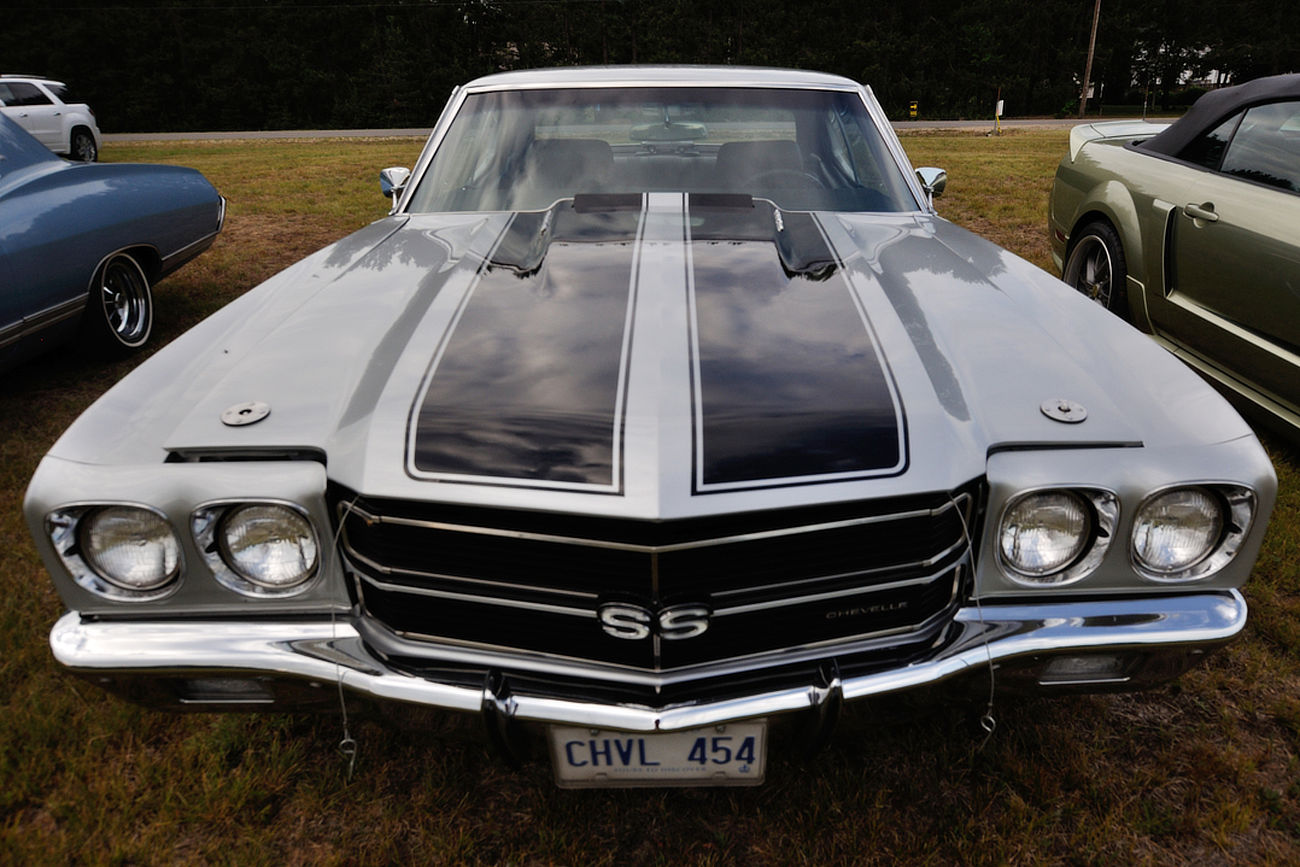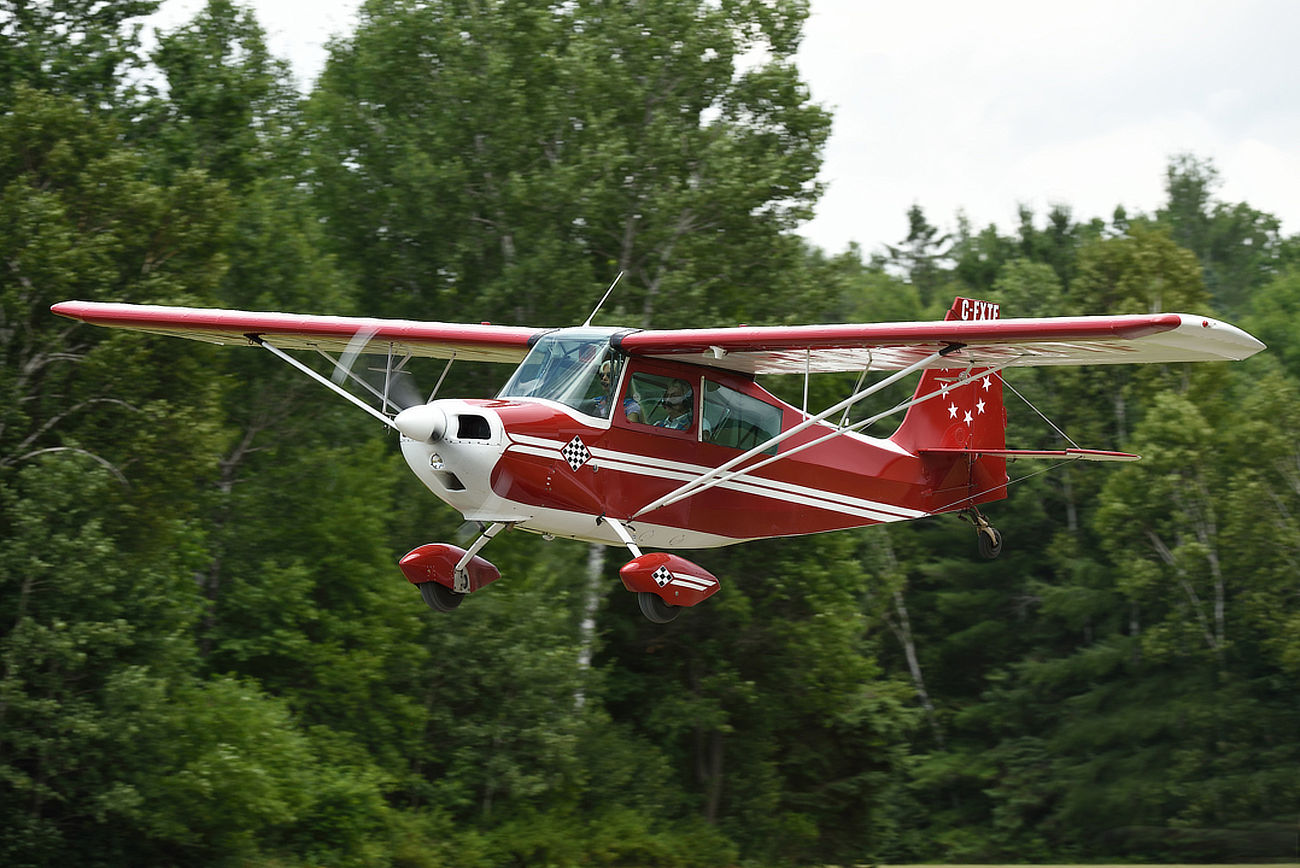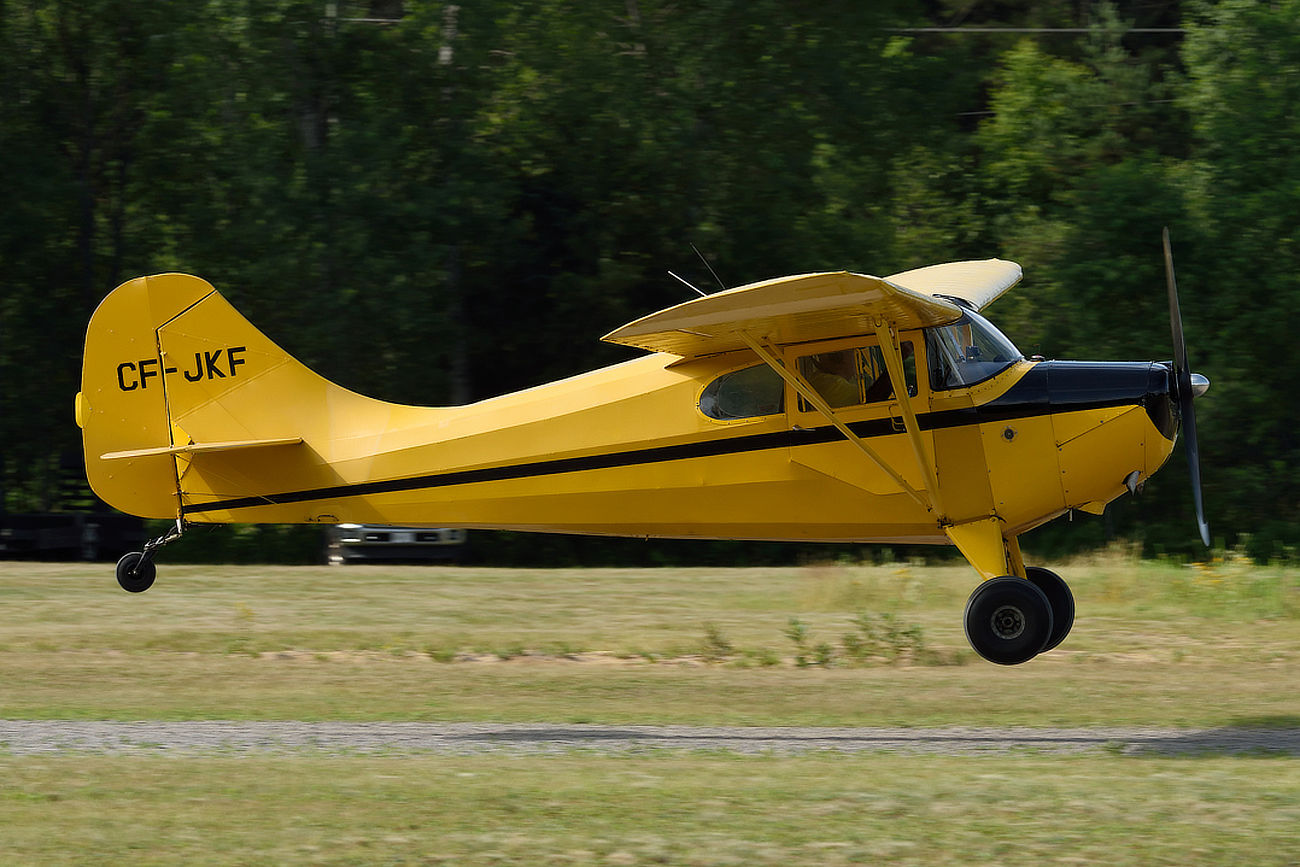ISSUE 955 - August 5, 2025 • Over 7,000 Total Ads Listed • 1,000+ NEW Ads Per Week
This eFlyer Has Been Sent To Over 160,000 Subscribers
|
| Bancroft Flying Club Breakfast & BBQ Lunch Fly-in - Part 1 |
| Kevin Moore, Contributing Writer & Photographer |
|
Aviation in Canada is suffering through more and more rules and regulations governing the industry, putting off many pilots and would-be pilots. However, a constant in Canada seems to be the weekend fly-in events at many small and medium airports across the country. Of course, it all depends on the weather and this year, in eastern Ontario, the weather has limited the fly-ins and the number of attending aircraft. Despite that, those that have attended the various fly-ins have enjoyed some wonderful events, with good food, good friends, new friends and suitable weather.
|
|
|
| There's always a nice variety of aircraft that visit the Bancroft Breakfast & BBQ Lunch Fly-in, from classics to more modern types, visitors enjoy them all. |
|
|
|
| Folks started to arrive early, left, both by aeroplane and vehicle, to enjoy a hearty breakfast of pancakes, sausages, real Ontario, local maple syrup, orange juice and coffee. There was a variety of classic cars that came out for the day and these first 3 certainly fit the 'classic' profile, right. |
|
To that end, the Bancroft Flying Club held their annual summer fly-in breakfast and BBQ lunch, a dual meal fly-in that typically attracts lots of interest. Unfortunately, thanks again to the weather, numbers were lower than as is typical of this super event but, despite that, numbers of attending aircraft weren't bad. There were lots of locals who also attended the fly-in, whether they came by personal car, truck, motorcycle, bicycle or on foot, everyone enjoyed the weather, the food and the company.
|
|
|
|
| This Luscombe Silvaire 8A had the honour of being the first aircraft to arrive for the day. |
|
The first aircraft to arrive was a lovely vintage, classic in the Luscombe Silvaire 8A. Initially designed for use by the US military, the XT8E was first developed in 1947. Unfortunately, it lost out to the L-16 but the Luscombe was modified to become the 8TF and was entered into the competition to become a US military aircraft once again but lost, this time, to the Cessna L-19. However, the aircraft found its place in the civilian market and more than 5700 were built. Luscombe Aircraft closed in 1949 however, the company assets were purchased by Temco Aircraft who went on to build another 50 Silvaire aircraft. Temco sold the Silvaire rights to the Silvaire Aircraft Corporation (Silvaire Uranium and Aircraft Corp) in 1955. Another 80 Silvaires were built, the 8F. The last aircraft was built in May, 1960, before the Silvaire Aircraft Company closed its doors. In all, there were 12 variants built by the assorted aircraft manufacturing companies.
|
|
|
|
| The Piper PA-20 Pacer looks a bit like a beefy version of the Piper Cub, not surprising considering it can seat 4 in its wide body cabin. |
|
Following the Luscombe Silvaire was a lovely Piper PA-20 Pacer 125. Piper first flew the PA-20 in 1949 with production beginning in 1950. The Piper Pacer is a tailwheel aircraft but a tricycle version, the PA-22 Tri-Pacer, was also made available for those pilots uncomfortable in a tailwheel aircraft. Original Pacer aircraft were fitted with a 135hp engine verses the Tri-Pacer being made available with a 150hp or 160hp engine. Tri-Pacer versions included the 150hp engine PA-22-150 Caribbean and the PA-22-108 Colt, a trainer version of the aircraft. The last of the Pacer line of aircraft, the PA-22-150 Tri-Pacer, came off the production line in March, 1964. There were 15 variants built from 1950 to 1964 with more than 10,600 aircraft having been built.
|
|
|
|
| The Bancroft Flying Club has expanded the fly-in to include an assortment of vendors which has proven to be a popular feature of the event. |
|
One of the features of the Bancroft Flying Club Fly-in is the addition of a line of assorted vendors to the event. They include things like an Ontario turtle rescue group, "Think Turtle Conservation Initiative,' assorted arts and crafts, a coffee truck, local radio station MooseFM, children's face painter, local maple syrup producer and more. Now folks can come out to the fly-in and enjoy aeroplanes, great food, great people and great variety of vendors.
|
|
|
|
| Ultralight aircraft have grown in popularity in Canada and the Rans Coyote S-6 can be registered and flown as an aircraft or ultralight, made the visit for breakfast. |
|
The Rans Coyote S-6 was designed by Randy Schlitter and first flew in 1988. It can be purchased in kit form or as a completed aircraft. It was developed after the S-4 and S-5, both single seat aircraft. The S-6 was then replaced by the S-6ES (extended span) Coyote II, shown above. Further development expanded the Coyote to the S-6S "Super Coyote." The ES can be built in roughly 250 man hours verses the S model taking 500 man hours. They can be built as either a taildragger or tri-cycle aircraft, depending on pilot preference and can also be operated on floats or skis. There are 4 variants of the S-6, with different engine options available.
|
|
|
|
| Aircraft landed then taxied in to the parking area, left. Resident aircraft, Cessna 170, right, owned by the flying club president, Llyn Davis. |
|
Bancroft has a lot to offer, whether you fly into Bancroft Airport or you drive. There's a No Frills grocery store, fast food such as Dixie Lee Fried Chicken, Subway, Dairy Queen, Pizza Pizza, Pizza Hut, Tim Horton's, McDonald's and local restaurants such as The Granite House, Bancroft Brew House, Eagle's Nest Restaurant, Vito's Pizzaria, For the Halibut (fish & chips), Dave's Place, Pine Yard Restaurant, The Curry House and more. There's also assorted accommodation such as the Point of View, Sword Inn, Bancroft Inn & Suites and Footprints Resort. You'll also find a Beer Store, banks, gift shops and more. Everything you need is available in the lovely town of Bancroft.
|
|
|
|
| On final are a Champion 7ECAX Citabria, left, and an Aeronca 11CC Super Chief, right. |
|
Aircraft flew in from various airports around central and eastern Ontario. The flight to Bancroft offers some spectacular views of the eastern end of the province of Ontario. Known as part of cottage country, the area is dotted with hundreds, maybe thousands, of lakes, rivers and creeks. Though not mountainous, there are some relatively high hills in the area making the approach into the airport a little.... different... as one does need to vary the approach to avoid some higher terrain but it's not difficult. The runway is roughly 2400' x 40' gravel and grass, with a shorter area of usable grass immediately south of the gravel runway. There is also a short, cross runway, unlisted, available in an emergency, for use if the winds are beyond aircraft limits. Fuel available is 100LL as well as JetA1.
|
|
|
|
| Resident aircraft, Zenair CH601-HDS, gleaming after a good polishing, left. Visiting Fleet Model 80 Canuck from the Collingwood Classic Aircraft Foundation, right, taxies in for fuel. |
|
Other areas of interest surrounding Bancroft include the famous Algonquin Park where you can camp, canoe, cross country ski, hike, fish and where you may see quite a variety of wildlife including moose, deer, black bears, beaver, muskrats, red squirrels, chipmunks, as well as other types of wildlife, and a wide variety of birds, You can also visit places such as Eagle's Nest, Bancroft Mineral Museum, visit the Rockhound Gemboree, Septemberfest, Ice Climbing Festival, gem shows, rock/gem sites, Ontario's first gold mine and assorted conservation areas, parks, waterfalls, historical/heritage sites and more. Spring, summer, fall and winter, there's always something to do in Bancroft and area!
|
|
|
|
| The Fleet Model 80 Canuck was a fairly popular training aircraft in Canada and was a Canadian designed & built aeroplane. |
|
The Fleet Model 80 Canuck was designed & built in Canada by Fleet Aircraft of Canada and first flew at Mount Hope, Ontario in 1944. Designed for use as a training aircraft as well as for personal use and as a light commercial aircraft, this 2-seat, side-by-side aircraft was considered relatively easy to fly. There were 225 of the type built over 13 years. There was also a tandem version however, there were only 3 of the type built. They were originally outfitted with Continental C-75, but later builds were available with the more powerful Continental C-85 engine. The Canuck was well built and had the versatility of being operated on wheels, skis or floats.
|
|
|
|
| Two Cessna aircraft that made the trip for some great grub, these Cessna 172s were two of several that visited on the day. |
|
Cessna is always a common sight in the skies and at fly-in events. Probably the most popular and common training aircraft in North America, Cessna aircraft continue to operate with flying clubs throughout Canada and the United States and probably will do for years to come. The most common Cessna training aircraft is the Cessna 172 but the Cessna 150/152 were also quite popular for those wanting to fly a smaller, more affordable aircraft. Whether you fly the 150/152, 172, 182, 206 or anything else manufactured by Cessna, they can be seen throughout North America.
|
|
|
|
| Aircraft marshallers were kept busy throughout the morning, left. Brightly painted resident aircraft, Cessna 206, right. |
|
|
| One of the visiting classic cars, vintage muscle! |
|
|
| Beautiful Bellanca Super Decathlon departing, heading for home. |
|
|
| The classic Aeronca 11CC Super Chief, extending the landing for a following aircraft. |
| By Kevin Moore, Contributing Writer & Photographer |
|
| |
|


